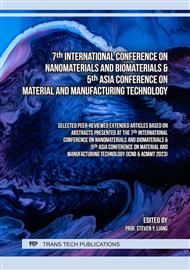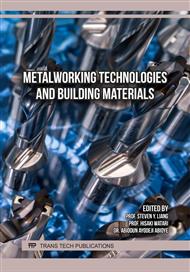p.71
p.77
p.85
p.97
p.105
p.111
p.119
p.125
p.131
Use of Domestic Waste Polyethylene as a Bitumen Modifier in Bituminous Pavement Applications
Abstract:
The present study evaluated the use of domestic waste polyethylene (PE) in the applications of bituminous pavement. This study investigates the performance of the mixes using different waste PE percentages, i.e., 1%, 2%, 3%, 4% and 5%. It is observed that the softening point and elastic recovery value increase with PE content increases. The penetration index (PI) and temperature susceptibility of binders were evaluated. Adding PE to bitumen shows an improvement in the temperature susceptibility of the modified binders. The Marshall Stability value of bitumen containing 3% PE is higher at 69.65% than virgin binder stability. When 3% PE modified bitumen to the mixes, its indirect tensile strength (ITS) is 70.44 % higher than the conventional mix. The tensile strength ratio (TSR) value improved from 62% (unmodified binder) to 91.18% (modified binder) at 3% PE content, which is 47% higher than the conventional mixture. It indicates that the moisture susceptibility of mixes using PE is higher than conventional mix. Additionally, the mix deformation resistance with 3% PE was found to be 68.75% higher than the mix made with the unmodified binder. The study found that the bituminous mixes using PE have shown higher effectiveness in the properties such as stability, indirect tensile strength, rutting resistance, etc. of the mixes. It indicates that bituminous mixes with modified binders with PE provide higher resistance to permanent deformation.
Info:
Periodical:
Pages:
125-130
Citation:
Online since:
March 2024
Authors:
Price:
Сopyright:
© 2024 Trans Tech Publications Ltd. All Rights Reserved
Share:
Citation:



